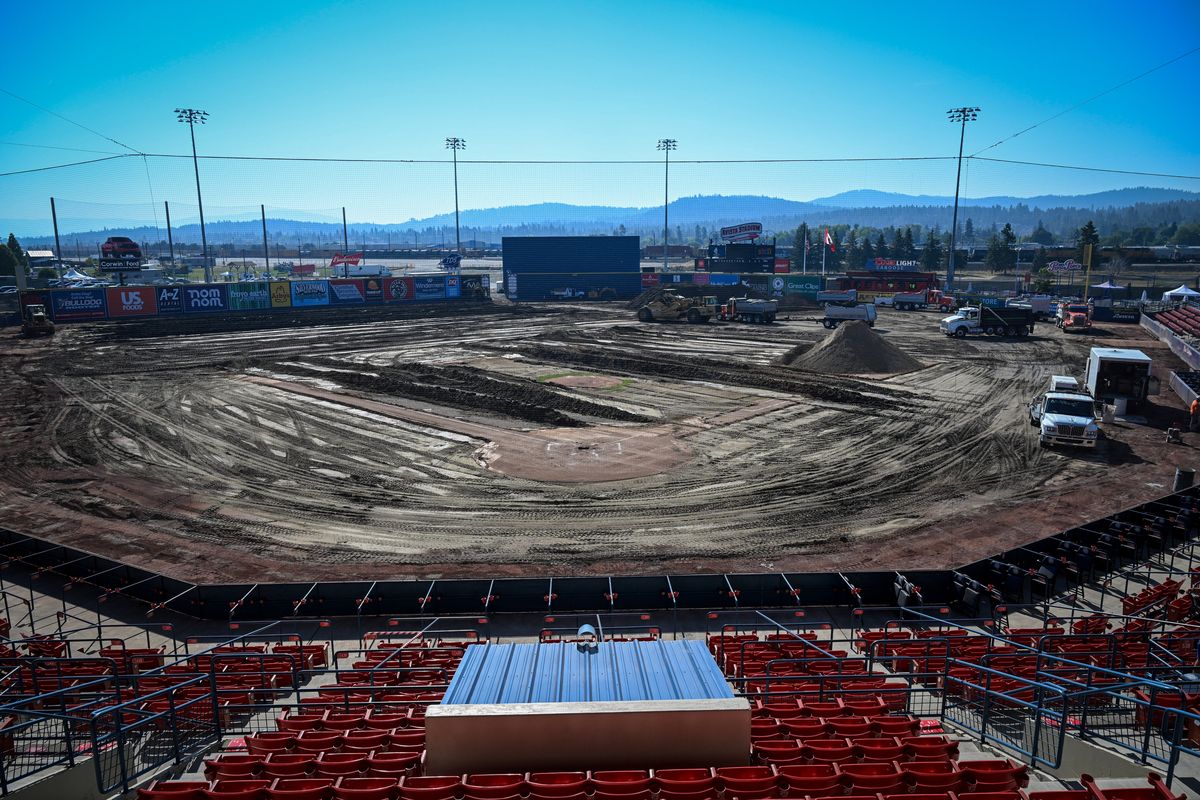Phase 2: Avista Stadium renovations continue with upgrades to playing surface, dugouts, outfield walls

Things are going to look a little different the next time you go to a Spokane Indians game at Avista Stadium.
Actually, it’ll look a lot different.
In the MLB Player Development Contract each of the affiliated minor league baseball organizations had to sign after the recent restructuring of the minors, MLB required improvements to player safety and working conditions throughout baseball.
Last offseason, most of the upgrades around Avista Stadium in “Phase 1” of the $22 million public-private funded project were not obvious to the public eye, including renovation and expansion of the home and visitors clubhouses, adding player commissaries, and the player development building on the concourse outside of the left-field corner.
That will change with Phase 2.
“Everything to do with the field and the play of the game is going to be impacted in this phase,” Spokane Indians president Chris Duff said. “We added the LED field lights (in Phase 1), which we did upgrade so they change colors – they flash when things happen in the games. We try to use that to add to the fan experience. But the vast majority of things that we did last offseason were player-related, health and safety, player-development pieces.”
On Tuesday, roughly 36 hours after the Indians finished their final homestand of the regular season, the club started tearing up the field and dugouts in preparation for the next round of renovations.
Those renovations include:
- Replacing the playing surface, including new irrigation, drainage and leveling of the field;
- Demolition, replacement and expansion of home and visitors dugouts;
- Affixing padding to outfield and foul territory walls;
- New, regulation-size foul poles;
- Replacing netting behind home plate and extending protective netting down the foul lines
That’s a lot of work to do, and April will be here before anyone knows it.
“We’ve got a firm time frame,” Duff said. “We’ve got to be ready to go by Opening Day of 2025 and you know, in order to have the field playable in early April, we’ve got to get the sod down before that first freeze. … We needed five, six weeks to get it ready. So as soon as the team went on the road, Tuesday morning 6 a.m., we started.”
The unfortunate byproduct of the renovations – mandated by MLB to be completed for next season – is that next week’s Northwest League championship series games hosted by the Indians will be at Gonzaga’s Patterson Baseball Complex, not Avista Stadium.
“We were fortunate enough to win the first half, fortunate enough to make the playoffs this year and be in a really good position,” Duff said. “But we knew it was coming. In order to meet that time frame of being compliant by Opening Day of 2025, this is something that we had to do for the short term for a long-term gain.”
There were other options on the table to host Indians home playoff games, but MLB finally approved the best-case-scenario move to Gonzaga.
“Gonzaga has been a great partner in this,” Duff said. “We feel really fortunate to have that relationship and just to have Gonzaga as part of our community here, so we appreciate them allowing us to play over there.”
The team is hopeful by Opening Day to have a new digital videoboard installed above the left-field wall to enhance the fan experience at the nearly 70-year-old ballpark.
“We’re hoping that’s going to be a big announcement that we have this fall,” Duff said. “We’ve got a plan in place to have it there for Opening Day, so that’s definitely the goal. We’re not quite there yet, but that’s what we’re working toward right now.”
A yet-unfunded “Phase 3” would center around renovating the Champions Club and upgrading the public restrooms.
“Those are areas we’ve targeted, areas where we need some improvements,” Duff said. “So we’re hoping to continue fundraising and get enough money in place to start that project next fall.”
Part of the project that is close to completion is the new strength and conditioning building, which will replace the outdoor batting cages and minimal workout facilities at the stadium. It will also house locker rooms for umpires – with dedicated male and female facilities, mascot dressing rooms and facilities storage.
The club hopes to host functions in the building when not in use by players.
“That building is going to be huge upgrade to the player development piece, and the (parent team) Colorado Rockies are really excited about that,” Duff said. “We hope it’s also something that not only enhances the player development experience, but also enhances the fan experience as well. We have some plans to try to utilize that building during the games, obviously, and also when the team is on the road and during the offseason as well. We’re looking to program that as much as possible and make it just another unique feature at Avista Stadium.”